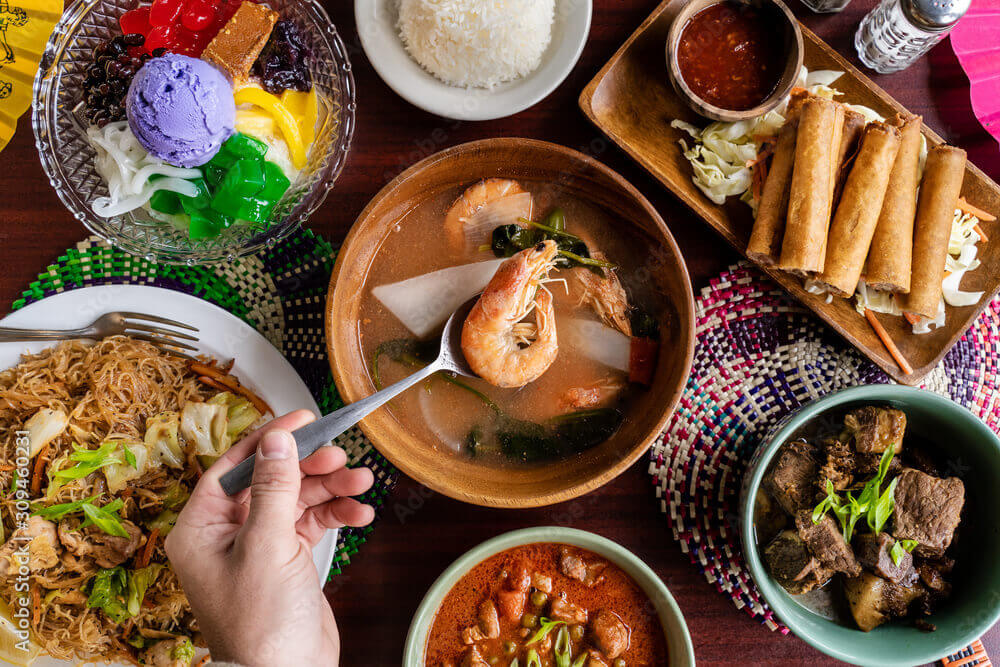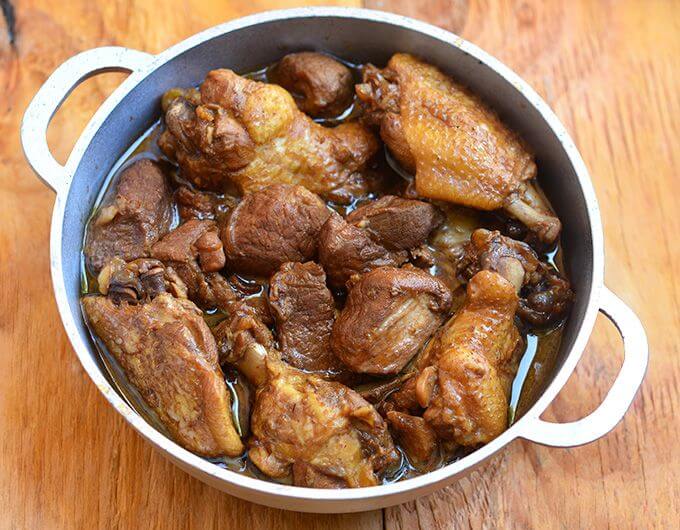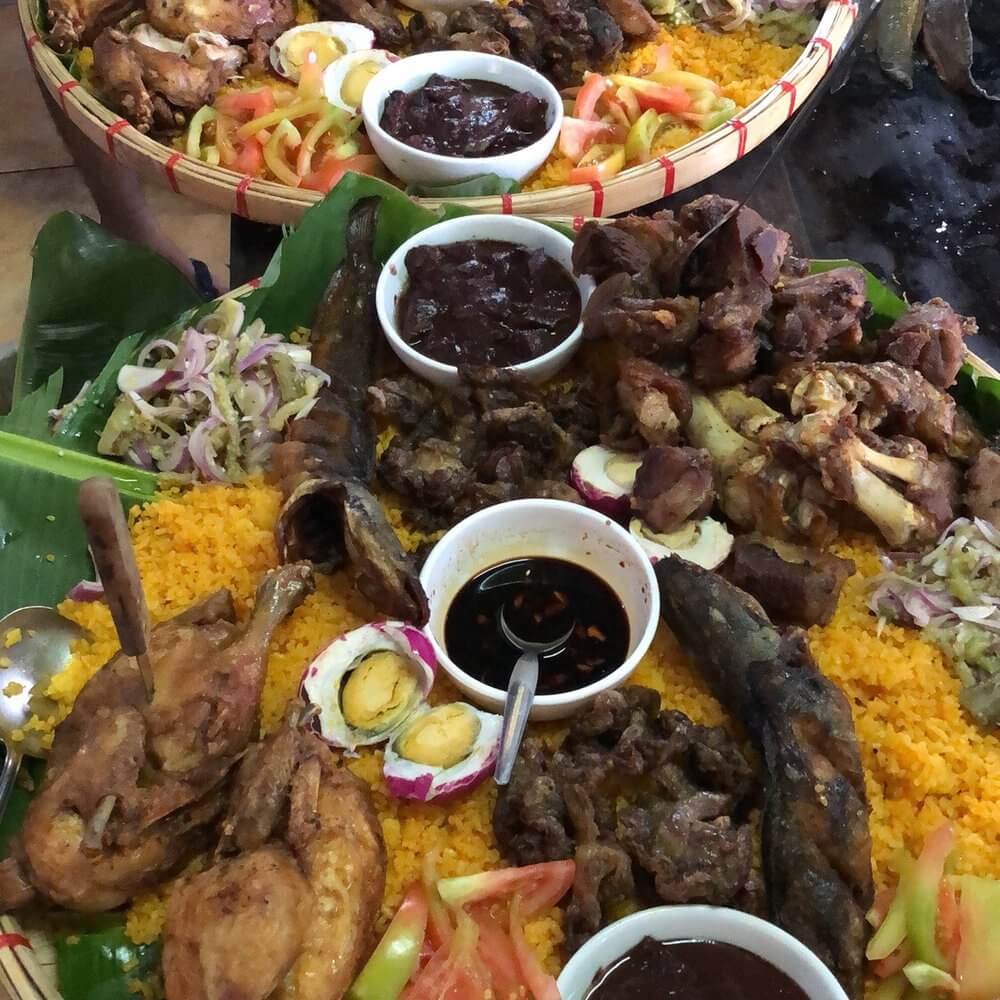Exploring Filipino Food
Introduction to Filipino Cuisine
Filipino cuisine is a vibrant and flavorful fusion of various influences, reflecting the rich cultural history of the Philippines. This Southeast Asian archipelago, known for its diverse ethnic groups, offers a myriad of exciting dishes that delight the taste buds of food enthusiasts. From hearty stews to savory snacks, Filipino food specialties are a culinary adventure worth exploring.
Filipino cuisine showcases the influence of Chinese, Spanish, and American cultures, alongside indigenous traditions (Wikipedia). Each region of the Philippines has its own unique specialties, making the food scene incredibly diverse. Popular dishes such as lechón (whole roasted pig), adobo (a vinegar and soy sauce-based stew), sinigang (a tangy broth with meat or seafood), and pancit (noodles) are just a few examples of the mouth-watering options available. Each dish tells a story of the country’s history and traditions.
| Influence | Notable Dishes |
|---|---|
| Indigenous | Lechón, Sinigang, Pancit |
| Chinese | Lumpia, Pancit canton |
| Spanish | Paella, Empanada |
| American | Burger Steak, Fried Chicken |
Rice is a staple in the Filipino diet, served with almost every meal. It’s often paired with a variety of meats, seafood, and vegetables. Leftover rice is transformed into sinangag, a garlic fried rice that is a breakfast favorite. For sweets, rice flour is used in making delicacies such as bibingka and puto.
The colonial periods left a significant mark on Filipino cuisine. Spanish rule introduced culinary elements from Mexico, leading to dishes like empanadas and tamales. American colonization brought fast food into mainstream Filipino life, introducing hot dogs, hamburgers, and fried chicken (Wikipedia).
Traditional Filipino meals include three main meals a day along with a morning and an afternoon snack, known as meryenda. Breakfast, or almusal, often features pandesal (a soft bread roll), tapa (cured beef), longganisa (Philippine sausage), champorado (chocolate rice porridge), and fresh fruit. Each meal offers an explosion of flavors and textures unique to the Filipino food experience.
For a deeper dive into the rich offerings of this culinary tradition, explore our articles on traditional Filipino dishes, indigenous Filipino ingredients, and the best Filipino regional cuisine. Embrace the flavors and discover the true essence of Filipino culinary art.
Classic Filipino Dishes
Adobo, Sinigang, Pancit
Adobo is frequently considered the national dish of the Philippines. It consists of pork or chicken stewed or braised in a unique sauce made from vinegar, cooking oil, garlic, bay leaf, peppercorns, and soy sauce. There are many variations of Adobo, ranging from “wet” to “dry,” with some adding coconut milk or a touch of sugar to balance the flavors (Wikipedia). For more traditional Filipino dishes, visit our article on traditional filipino dishes.
Sinigang is another Filipino favorite, renowned for its sour and savory flavor. This dish typically includes meat or seafood (often pork, beef, shrimp, or fish) cooked in a broth that gets its sourness from tamarind, although other souring agents such as green mango, calamansi, or guava can be used. Sinigang is often accompanied by vegetables like kangkong (water spinach), labanos (radish), okra, and eggplant.
Pancit, a term referring to Filipino noodles, comes in various forms and regional variations. Popular types include Pancit Canton (stir-fried egg noodles with meat and vegetables), Pancit Bihon (stir-fried rice noodles), and Pancit Palabok (noodles topped with a rich shrimp sauce, hard-boiled eggs, and chicharrón). Pancit dishes are often enjoyed during celebrations as they symbolize long life.
| Dish | Main Ingredients | Unique Features |
|---|---|---|
| Adobo | Pork/Chicken, Vinegar, Soy Sauce, Garlic | Sour and savory with variations in cooking style |
| Sinigang | Meat/Seafood, Tamarind, Vegetables | Sour broth with diverse vegetables |
| Pancit | Noodles, Meat, Vegetables | Wide range of noodle types and preparation methods |
Lechon, Longganisa, Kare-Kare
Lechon, or whole roasted pig, is an iconic centerpiece for Filipino celebrations. The pig is marinated in a blend of spices, then slowly roasted over an open flame until the skin is crispy and the meat tender. Lechon skin is particularly prized for its crispy texture, making it a must-try for pork lovers.
Longganisa is the Filipino version of sausage, with varieties that vary by region. There are sweet (hamonado) and savory (de recado) versions, each with their own blend of spices, vinegar, and other ingredients. Longganisa is usually enjoyed during breakfast, paired with rice and egg (known as “longsilog”).
Kare-Kare is a rich and hearty Filipino stew featuring oxtail and tripe cooked in a thick peanut sauce. It is typically served with a variety of vegetables such as eggplant, banana blossom, and string beans. Shrimp paste (bagoong) is served on the side to add a salty and savory counterpoint to the dish’s mild and creamy flavor profile (Wikipedia). Discover more delicious regional dishes in our article on the best filipino regional cuisine.
| Dish | Main Ingredients | Unique Features |
|---|---|---|
| Lechon | Whole Pig, Spices | Crispy skin and tender, flavorful meat |
| Longganisa | Pork, Spices | Regional variations in flavor (sweet/savory) |
| Kare-Kare | Oxtail, Tripe, Peanut Sauce, Vegetables | Rich peanut sauce served with shrimp paste |
Savor the diversity and richness of Filipino food specialties with these classic dishes, and explore more gastronomic delights through our curated selection of popular philippine food recipes.

Photo by Adobe Stock
Regional Specialties
Delving into the rich tapestry of Filipino cuisine, the diverse regions of the Philippines each offer their own unique specialties. Here, we highlight some of the most celebrated dishes from Cebu, Pampanga, Bacolod, and the Bicol Region.
Cebu's Lechon and Sisig
Cebu is synonymous with lechon, the iconic roasted pig known for its crispy skin and flavorful meat. It’s a must-try Filipino food specialty, especially during grand celebrations. A local favorite for lechon in Cebu is Rico’s Lechon, which delivers perfectly crisp skin and tender, flavorful meat. For more insights on traditional dishes, check out traditional Filipino dishes.
| Dish | Description | Notable Feature |
|---|---|---|
| Lechon | Whole roasted pig | Crispy skin, savory meat |
| Sisig | Chopped pig’s head and liver, often served on a sizzling plate | Crispy, tangy, spicy |
Pampanga's Sisig and Bagnet
Pampanga, often referred to as the culinary capital of the Philippines, is famed for its sisig, a sizzling dish made from chopped pig’s face. This dish, credited to Lucia Cunanan, is a beloved bar snack. Pampanga also boasts bagnet, crispy pork belly that’s incredibly addictive.
| Dish | Description | Notable Feature |
|---|---|---|
| Sisig | Chopped pig’s head and liver served hot | Sizzling, crispy, tangy |
| Bagnet | Deep-fried pork belly | Crunchy skin, juicy meat |
Bacolod's Chicken Inasal
Bacolod, located on the island of Negros, is famous for Chicken Inasal. This grilled chicken delicacy is marinated in a mixture of vinegar, calamansi, and spices before being grilled to perfection. Aida’s Manokan in Bacolod City is widely recognized as one of the best spots to enjoy this delectable dish. Explore more about authentic regional specialties on our page for best Filipino regional cuisine.
| Dish | Description | Notable Feature |
|---|---|---|
| Chicken Inasal | Grilled chicken marinated in vinegar and calamansi | Juicy, tangy, slightly smoky |
Bicol Region's Laing and Bicol Express
From the Bicol Region comes laing, one of the spiciest Filipino dishes, made from dried taro leaves simmered in coconut milk and chili peppers. Another must-try dish from the region is bicol express, a spicy and savory pork dish that’s stewed in coconut milk to give it a rich and creamy sauce.
| Dish | Description | Notable Feature |
|---|---|---|
| Laing | Taro leaves cooked in coconut milk with chilies | Creamy, spicy |
| Bicol Express | spicy, savory, and flavorful Filipino dish | Creamy, savory, spicy |
For those looking to recreate these incredible dishes at home, check out our popular Philippine food recipes for a step-by-step guide.
Exploring the regional specialties of the Philippines offers a glimpse into the diverse and rich culinary heritage of this beautiful country. Whether savoring the succulent lechon of Cebu or the creamy, spicy laing of the Bicol Region, diners are in for a treat. Discover the unique flavors and ingredients that make Filipino cuisine truly special by exploring further into indigenous Filipino ingredients.
Share this post: on Twitter on Facebook




Your blog post was fantastic, thanks for the great content!
This design is incredible! You obviously know how to keep a reader entertained. Between your wit and your videos, I was almost moved to start my own blog (well, almost…HaHa!) Great job. I really loved what you had to say, and more than that, how you presented it. Too cool!